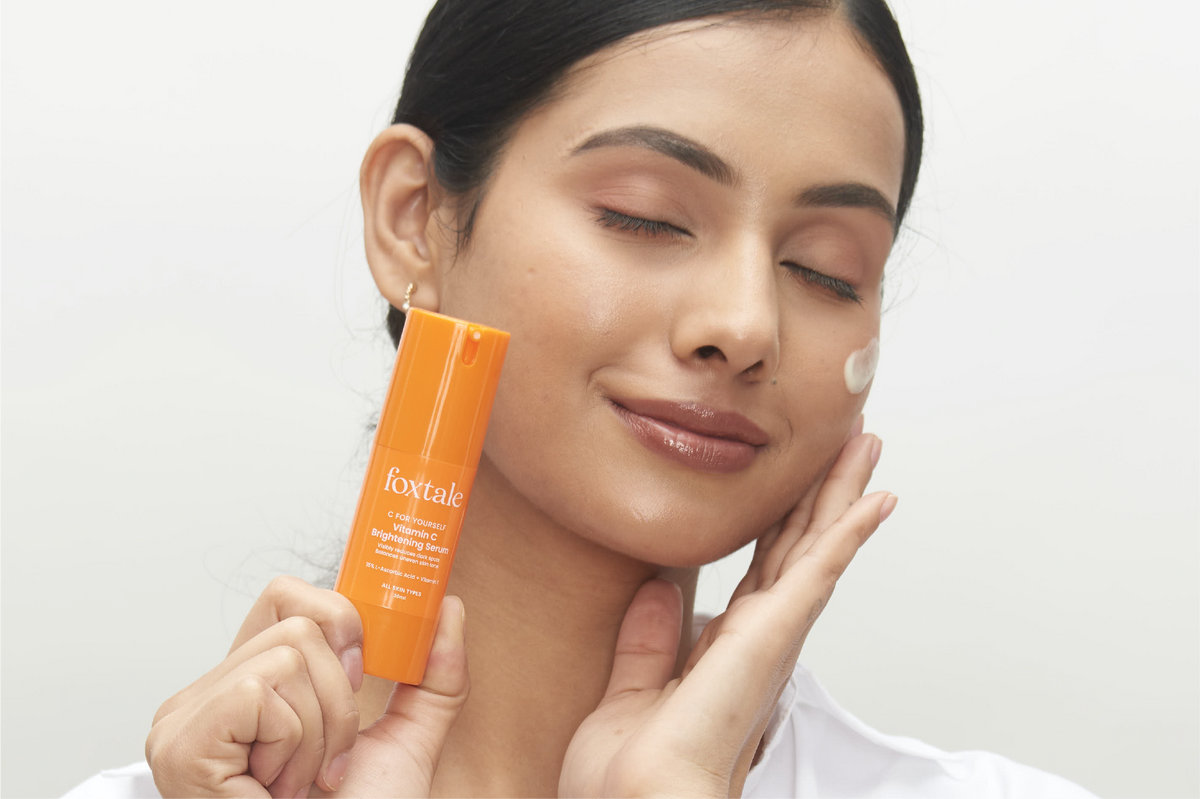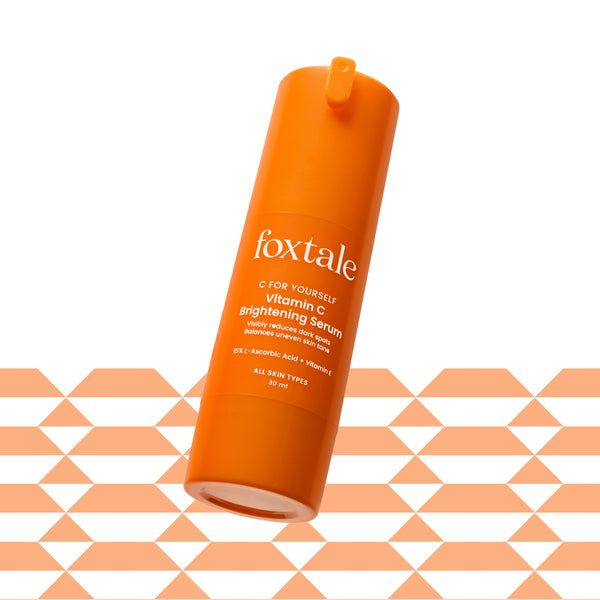
Some ingredients simply perform better together. That’s the case with Vitamin C and Vitamin E—a dermatologist-backed duo that targets dullness, pigmentation, fine lines, and barrier damage all at once.
When used in a single serum, these antioxidants don’t just add their benefits—they boost each other’s effectiveness. If you’re after skin that looks brighter, smoother, and more resilient, this pairing belongs in your routine.
Why Combine Vitamin C and E Benefits in Skincare?
Individually, Vitamin C and Vitamin E are powerful. But together, they form a complete defense and repair system for the skin.
Vitamin C supports brightness, Collagen production, and tone correction. Vitamin E protects and nourishes, helping skin stay calm and hydrated. More importantly, they stabilize each other—so your formula stays potent longer and works more effectively on the skin.
If you’re using actives but not seeing long-term change, this is the kind of combination that closes the gap.
Vitamin C Benefits: The Glow-Boosting Skincare Staple
Vitamin C (especially as L-Ascorbic Acid) is known for improving radiance and reducing signs of aging.
It works by:
1. Supporting Collagen production, which helps skin stay firm and smooth
2. Fading dark spots and uneven tone by slowing melanin production
3. Providing antioxidant protection against free radical damage from UV and pollution
Used consistently, Vitamin C helps even out tone, improves elasticity, and gives the skin a healthy glow. It also works well under sunscreen, making it a smart daytime step.
Try a Vitamin C Serum—a fast-absorbing, stable formula designed for everyday use.
Vitamin E Benefits for Skin: The Ultimate Nourisher
Vitamin E (often listed as Tocopherol) plays a key role in supporting the skin’s barrier. It’s naturally oil-soluble, which means it works well with the skin’s outer layer to prevent moisture loss.
The main Vitamin E benefits for skin include:
1. Reinforcing the skin’s barrier to reduce dryness and flakiness
2. Calming inflammation and supporting sensitive skin
3. Protecting skin from environmental triggers like UV, smoke, and heat
It’s especially helpful for dry, aging, or irritated skin and pairs well with active ingredients that may otherwise cause sensitivity.
Vitamin E for Skin Healing: A Natural Recovery Booster
One of the lesser-known Vitamin E benefits for skin is its ability to support healing. It’s frequently used to help with:
1. Post-acne marks and lingering redness
2. Minor burns or sun damage
3. Dry, flaky skin caused by weather or over-exfoliation
Vitamin E helps soothe and soften skin while supporting elasticity during recovery. It won’t erase deep scars, but it can improve texture and reduce long-term discomfort in irritated areas.
The Synergy of Vitamin C and Vitamin E in Serums
When used together in a single serum, Vitamin C and E enhance each other’s effects. Here’s what happens:
1. Vitamin E keeps Vitamin C stable, preventing it from breaking down when exposed to air or light
2. Vitamin C helps regenerate Vitamin E, keeping its antioxidant power active
3. Together, they protect skin more effectively from pollution and UV-related damage
How to Use a Vitamin C and E Serum in Your Routine
The best time to apply a Vitamin C and E serum is in the morning, right after cleansing.
Here’s a simple routine:
1. Cleanse with a gentle face wash
2. Apply Vitamin C and E serum on dry skin
3. Let it absorb fully before moving on
4. Follow with moisturizer and SPF 30 or higher
Use once a day. If you have sensitive skin, start with every other day and monitor how your skin responds.
Choosing the Right Vitamin C and E Serum for Your Skin
Look for well-formulated products that include:
1. L-Ascorbic Acid (10–20%) for potency and proven results
2. Tocopherol (Vitamin E) for absorption and barrier support
3. Ferulic Acid, which improves antioxidant strength and keeps the formula stable
Avoid serums with unstable forms of Vitamin C or unnecessary fragrance. They may oxidize quickly or cause sensitivity.
A Vitamin C Serum checks all the boxes—stable, lightweight, and well-suited for daily use.
What to Avoid When Using Vitamin C and Vitamin E
This combination is effective, but it shouldn’t be mixed with every active.
Avoid pairing with:
1. AHAs or BHAs (like Glycolic or Salicylic Acid) in the same routine—these may disrupt pH balance
2. Retinol, which can increase irritation when layered with strong antioxidants—use them in separate routines
3. Occlusive oils or thick creams immediately after—wait a few minutes for absorption to avoid pilling
Always follow with sunscreen. Vitamin C improves your skin’s response to UV exposure—but it doesn’t replace SPF.
Final Thoughts on Vitamin C and Vitamin E Benefits
The Vitamin C and E benefits aren’t just complementary—they’re mutually reinforcing. Together, they address common concerns like pigmentation, dullness, barrier damage, and early aging with more power than either can alone.
This combo works well for:
1. Dull or uneven skin tone
2. Dry or flaky skin types
3. Post-acne recovery
4. Those exposed to high pollution or UV stress
Stick to consistent use, apply in the morning, and pair with sunscreen. Over time, you’ll notice better glow, tone, and texture.
FAQs
Can I use Vitamin C and Vitamin E every day?
Yes. They're safe for daily use when the formulation is well balanced. Apply in the morning before SPF.
Is it safe to use Vitamin E for skin healing on acne marks?
Yes. It helps calm inflammation, reduce dryness, and support barrier recovery around healing spots.
What’s better – Vitamin C alone or combined with Vitamin E?
The combination offers better stability and extended antioxidant protection. If you're choosing between the two, go with a formula that includes both.




